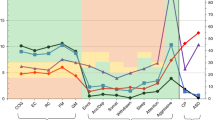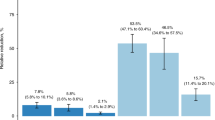Abstract
Summary: An analysis of palmar crease variants was carried out in a group of “at risk” newborns, without any evident congenital anomalies. This group consisted of 108 prematures, 74 infants who were small for gestational age, 62 newborns with history of gestational complications, and 46 newborns with a history of intrauterine methadone exposure.
A system of classification was developed based on observations of 500 normal newborns as control subjects, 466 normal mothers, and 200 normal children. The palmar crease variants can be divided into four main groups, schematically presented as normal variants, simian crease and its variants, Sydney line and its variants, and another group of unusual variants which do not fit into the other groups. A study of these groups revealed that familial components, race, sex, and age are factors that can influence the expression of palmar crease patterns. There is an increased frequency of abnormal creases in each of the groups of “at risk” newborns. Moreover, there is an apparent association of interrupted transverse creases and intrauterine methadone exposure.
Speculation: Our findings suggest that examination of palmar creases and the demonstration of variant patterns may provide a useful, objective indicator of possible abnormal fetal development. Since it is important to utilize a standard scheme in routine newborn examination, both to identify palmar crease variants and to establish a baseline for comparative studies, a system for classification of palmar creases is presented.
Similar content being viewed by others
Log in or create a free account to read this content
Gain free access to this article, as well as selected content from this journal and more on nature.com
or
Author information
Authors and Affiliations
Rights and permissions
About this article
Cite this article
Dar, H., Schmidt, R. & Nitowsky, H. Palmar Crease Variants and Their Clinical Significance: A Study of Newborns at Risk. Pediatr Res 11, 103–108 (1977). https://doi.org/10.1203/00006450-197702000-00004
Issue date:
DOI: https://doi.org/10.1203/00006450-197702000-00004
Keywords
This article is cited by
-
Can palmar creases serve as landmarks for the deeper neuro-vascular structures?
Surgical and Radiologic Anatomy (2014)
-
The clinical significance of multiple hair whorls and their association with unusual dermatoglyphics and dysmorphic features in mentally retarded Israeli children
European Journal of Pediatrics (1987)
-
Dissociation of a t(12;21) resulting in a normal cell line in two trisomic 21 sons of a nonmosaic t(12;21) father?
Human Genetics (1983)



